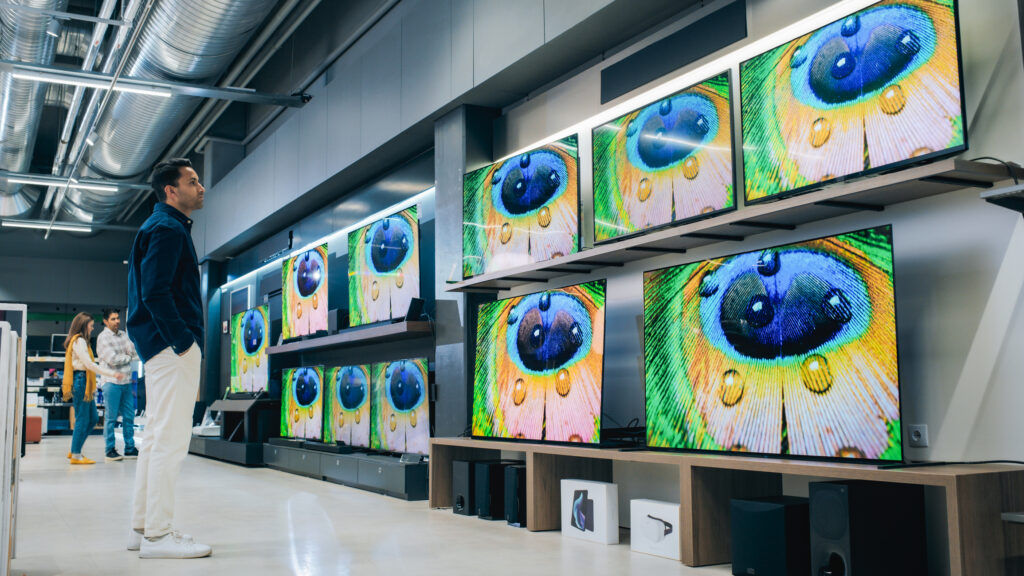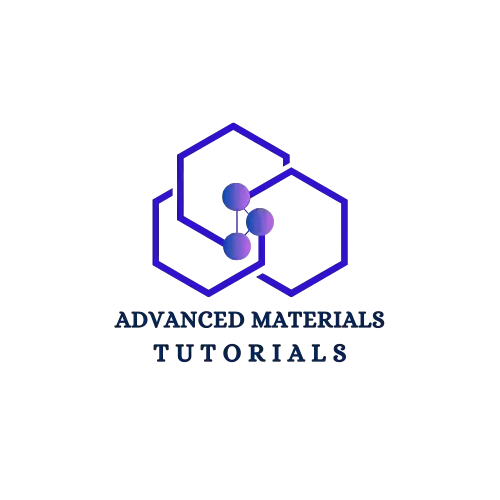QLED: Revolutionizing The Modern Television Screen

“Not just a screen, but a spectrum-QLED is where materials science illuminates the canvas of modern display.”
Imagine watching your favorite content with colors so rich and subtle that it feels as though you’re peering through a window rather than a screen. How might such a vibrant display enhance your viewing experiences? Well beyond those dazzling visuals, there’s a new TV display technology on the horizon called QLED.
QLED stands for Quantum dot Light Emitting Diode. It is a display technology that uses quantum dots-nanometer-sized semiconductor particles emitting specific colors when exposed to light. While traditional screens such as plasma screens or LCDs were great in their time, modern QLED displays have surpassed them in almost every aspect — including brightness, energy efficiency, thin design, and longevity. As a result, plasma TVs are now obsolete, and QLED are clearly the more beneficial and future-proof choices. They also support thinner screen designs, making them ideal for sleek TVs and monitors.
What's special about QLED TVs?
Quantum dot LED TVs make use of the special properties of quantum dots — especially their ability to produce exceptionally high brightness, known as “high luminance.” Luminance refers to how bright a screen looks and that brightness is an important factor affecting other elements of image quality. First, when a screen gets brighter, the contrast between light and dark areas becomes more noticeable — this makes images and videos look more vivid and detailed. This effect is known as HDR, or High Dynamic Range. Second, HDR doesn’t just rely on brightness alone — it also depends on how rich and vibrant the colours are. The more colourful and lifelike the image, the better the overall picture quality. The effect of brightness on overall colour quality is simple. For example, in the red colour spectrum, there is a huge range of bright and dark reds and QLED TVs is capable of expressing this wide range of colours.

What is QLED Technology?
Modern TV sets primarily utilize different kind of screens technologies such as Plasma Screens, LCD (Liquid Crystal Display), LEDs (Light emitting diodes), OLED (organic LEDs), for the brighter and contrasting views of the images and videos. QLED is a variant of LED that uses quantum dots for enhanced colour reproduction. Quantum dot technology is what makes these types of television differ from conventional LED TVs.
Brief History: From Lab to Living rooms
The concept of using quantum dots in display technology was first introduced in the 1990s, primarily in research applications. It wasn’t until 2013 that Sony introduced the first commercially available quantum dot-enhanced TVs under the Triluminos trademark (Sony’s trademark for the technology). Later in 2015, Samsung and TCL brand showcased the QD-enhanced LED displays at the consumer electronics show CES 2015.
Inside QLED Technology: Understanding the Mechanism of QLED Brilliance
QLED technology uses quantum dots as the main constituent of the display system. Quantum dots are the semiconductor nanocrystals (~ 2-10 nm) that have the unique ability to emit light of specific wavelengths depending on their size when excited by an external light source. Typically, the advanced display screen comprises of a sandwich-like stack structure. There is one anode and cathode, in between are arranged a hole injection layer, a hole transport layer, a light emitting layer, an electron transport layer and colour filters, working together to generate vibrant visuals. Among them, the QLED light-emitting layer uses quantum dots which overcomes the shortcomings of other light-emitting materials such as sensitivity to water and oxygen and poor stability. These QDs are photo-emissive in nature incorporated into a film layer within the LED structure. The LED backlight excites the quantum dots which in turn emit their own vibrant and contrasting colours, enhancing brightness and creating the high-quality images. It’s all like shining a flashlight on a baseball and it is glowing bright red. That’s the general idea of a quantum dot, but scaled down to the nanoworld.
In QLED TV, the blue LED backlight acts like spotlights which excites the quantum dots, which in turn emit red and green light depending on its size. When combined, these three colours (Red, Green, Blue) create a highly vivid, full-spectrum of colors. QLEDs can achieve near 100% of the Rec. 2020 colour gamut, making them ideal for HDR (High Dynamic Range) content at a very low power consumption compared to other types of display technology available in the market. Layers like liquid crystals, polarizers, and thin-film transistors help control and direct the light to form sharp images. It’s a brilliant blend of nanoscience-tuning colour with nanometre precision and optics; all packed into your TV screen.
What's the real size of these quantum dots?

Quantum dots (QDs) are extremely small semiconductor nanoparticles, typically 2 to 10 nm in diameter — that’s 10,000 times smaller than the width of a human hair. When exposed to light or electrical energy, they emit their own-coloured light. The colour depends not only on the material, but almost entirely on the size of the quantum dot. The specific wavelength and therefore the colour of the created light depends on the size of the quantum dot. So, by commanding the size of quantum dots, visible light of various ideal wavelengths can be generated. Larger quantum dots emit light in the red end of the spectrum, the smaller ones towards the blue end. The underlying physics results from the quantum confinement effect — a phenomenon where electrons are trapped in such a tiny space that their energy levels become size-dependent.
Quantum dot (QD) being smaller in size is having high energy and therefore emit shorter wavelength, i.e. blue colour while the larger one having lower energy emits light of longer wavelength, that is of red colour. The blue LEDs create blue light, and supply the photonic energy for two different sizes of quantum dots to create red and green and light. One method is to use a tube along the edge of the TV with blue LEDs wrapped with red and green quantum dots. Another, used by Samsung with its SUHD TVs, is to add an entire QD layer in the “sandwich” that makes up the LED LCD TV.
How It Works (In layman’s Terms)
Step 1: Excitation: A quantum dot absorbs energy when illuminated by the LED backlight (usually from blue LED light or an electric current).
Step 2: Electron Jump: The absorbed energy excites an electron from the valence band to the conduction band, creating an electron- hole pair (exciton).
Step 3: Recombination: Recombination of electron and holes releases energy.
Step 4: Emission: The energy released during recombination is emitted as photons, which are particles of light — its colour depends on the bandgap, which is controlled by the quantum dot size.
Materials Used in QLED Displays
Component | Material(s) | Function/Notes |
Quantum Dots (QDs) | – CdSe (Cadmium Selenide) | – CdSe: High efficiency, regulated for toxicity |
Backlighting System | – Blue LED made of GaN (Gallium Nitride) | Excites QDs; provides the base blue light |
Quantum Dot Enhancement Film (QDEF) | – Quantum dots embedded in a polymer matrix | Converts blue light into red and green; located between LED and LCD panel |
Colour Filters | – Liquid crystal Polymers (LCPs) – Polymeric Films – Polyethylene Terephthalate (PET), Triacetyl Cellulose (TAC) | Modulates light transmission; filters RGB channels |
Charge Transport Layers | ZnO nanoparticles, Organic Layers such as PEDOT: PSS and TFB | Electron Transport Layer Hole injection and transport |
Polarizers & Diffusers | – Polyvinyl Alcohol (PVA) (polarizers) | Controls light polarization; spreads light evenly across the screen |
TFT Array (Thin-Film Transistors) | – a-Si (Amorphous Silicon) | Controls pixel-level voltage to modulate liquid crystals |
Protective Layers & Coatings | – Magnesium Fluoride (MgF₂) (anti-reflective) | Reduce glare, improve durability, provide mechanical support |
Self-Emissive QLED Prototypes (R&D) | – Electroluminescent QDs | Next-gen QLEDs without LCD; light emission directly from QDs (still under development) |
- Samsung and other companies are moving toward cadmium-free QLEDs for environmental compliance, often using InP-based quantum dots.
Looking Ahead
Bringing it all into focus, we can say that QLED displays are the fusion of physics, nanotechnology, and advanced materials engineering. QLED technology is a shining example of how materials science brings incredible ideas to life. By studying and designing materials at the tiniest scales, scientists discovered how to create special particles called quantum dots that glow in brilliant colours. These tiny materials are carefully crafted to produce brighter, clearer, and more energy-efficient screens. Thanks to the work of materials scientists, what once seemed like science fiction is now part of the beautiful, colourful displays we enjoy in today’s Televisions.
What are your thoughts on the future of quantum dot technology? Have you experienced it first hand? To delve deeper into the world of technology, explore our upcoming articles.
Sources
Shirasaki, Y., Supran, G. J., Bawendi, M. G., & Bulović, V. (2013). Emergence of colloidal quantum-dot light-emitting technologies. Nature Photonics, 7(1), 13–23.
Samsung Display Newsroom, Pust, P., Weiler, V., Hecht, C., et al. (2014). Narrow-band red-emitting Sr[LiAl₃N₄]:Eu²⁺ as a next-generation LED-phosphor material. Nature Materials, 13, 891–896.
Nanosys Inc. White Paper. Quantum Dot Enhancement Film: Advancing Display Color Performance.
Pochi Yeh and Claire Gu. Optics of Liquid Crystal Displays. Wiley, 2009.
Schadt, M., & Helfrich, W. (1971). Voltage-dependent optical activity of a twisted nematic liquid crystal. Applied Physics Letters.
Nomura, K., et al. (2004). Room-temperature fabrication of transparent flexible thin-film transistors using amorphous oxide semiconductors. Nature, 432(7016), 488–492.
Kim, L., et al. (2020). All-inorganic quantum-dot LEDs for next-generation displays. Advanced Materials, 32(10), 1902051.
www.etnews.com (18 October 2016). “Next Samsung Electronics’ QLED TV’s Name to Be SUHD QLED TV”. etnews.com. Retrieved 3 April 2018.
^ “How QLED TV could help Samsung finally beat LG’s OLEDs”. cnet.com. 30 June 2016. Retrieved 3 April 2018
https://patents.google.com/patent/CN105140370A/en
